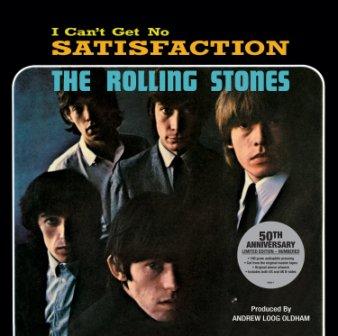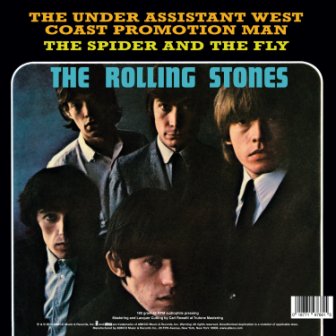The Rolling Stones’ “Satisfaction” turns 50
(Click here to buy the “Satisfaction” 12-inch vinyl reissue.)
Back in 1985 when I was in my last year at boarding school and filled with the usual teen anxieties, one of my greatest fears was that the upcoming 20th anniversary of the Rolling Stones’ “(I Can’t Get No) Satisfaction” would pass without appropriate recognition. So I wrote to my local DJ to ask, among many other things, if the station planned to commemorate the milestone.
In his 2-page handwritten response, he indicated that he hadn’t heard anything around the office, but would ask the program director (see the letter at the end of this post). Of course nothing happened, and I celebrated solo.
Cut to 2015, and I’m still worried. This time, about the 50th anniversary of “Satisfaction,” which is either May 10-11, when the Rolling Stones first recorded it, in Chicago; or May 12-13, when they started all over again, more satisfactorily, in Hollywood; or June 6, when the single was released in the USA; or late-August, when it came out in the UK.
So I took matters into my own hands, and wrote a story about the anniversary for a major Brazilian online outlet, UOL. I got quotes from academics, Gene Simmons, and the song’s producer, Andrew Loog Oldham. I also learned that ABKCO Music, which owns the rights to the band’s ’60s output, planned to reissue “Satisfaction” as a 12-inch single (pictured above), along with the B-sides from the both the U.S. and UK versions. I wanted to get the Stones or Bill Wyman, but no luck. I also tried and failed to track down the song’s reclusive engineer, Dave Hassinger.
Click here for the story in Portuguese, controversially headlined (translated): Satisfaction is 50 years old and still intrigues: masterpiece or sexist swipe?
And following is the English-language draft I sent to UOL. (Many thanks to Ben Camp at Berklee College of Music, and to Stephanie Doktor at the University of Virginia (Charlottesville)’s McIntire Department of Music.)
The anthem that turned the Rolling Stones into rock gods is about to turn 50, just as the band prepares to the hit the road in North America where cheering fans spanning multiple generations will doubtless sing along to it at every show.
“(I Can’t Get No) Satisfaction,” a pulsating repudiation of modern consumer mores, was recorded in the United States in May 1965, released there a little over three weeks later, and quickly vaulted up the charts to spend four weeks at No. 1.
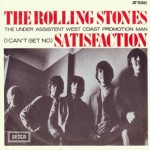 Not only was “Satisfaction” the first of the Stones’ nine chart-toppers in the United States, it was also a worldwide smash, and eventually went to No. 1 in Brazil a year later in 1966. It has been decreed the greatest rock song of all time by both Rolling Stone magazine and VH1.
Not only was “Satisfaction” the first of the Stones’ nine chart-toppers in the United States, it was also a worldwide smash, and eventually went to No. 1 in Brazil a year later in 1966. It has been decreed the greatest rock song of all time by both Rolling Stone magazine and VH1.
KISS frontman Gene Simmons was 15 when he first heard it, an Israeli immigrant trying to adapt to the American way in New York City, where he lived with his Hungarian mother, a Holocaust survivor. The song immediately resonated with him.
“I had heard the Beatles and was [blown] away by the whole thing, and I’d heard the Stones before. We’d heard some of their other songs. And then when ‘Satisfaction’ came on it just stopped me in my tracks,” he said.
Indeed, “Satisfaction” bore little resemblance to the blues- and R&B-based songs the Stones had released in the prior two years of their existence, including their covers of “Not Fade Away,” “Time is on My Side,” and “Little Red Rooster.”
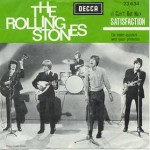 Its dominant feature is Keith Richards’ distorted guitar riff, which kicks off the song and reappears with every chorus. “Within the first two seconds of the song … probably anybody who’s not a huge Stones fan could still name the song,” said Ben Camp (https://www.bencamp.com), assistant professor of songwriting at Berklee School of Music in Boston, who teaches “Satisfaction” in a course surveying 100 years of popular music.
Its dominant feature is Keith Richards’ distorted guitar riff, which kicks off the song and reappears with every chorus. “Within the first two seconds of the song … probably anybody who’s not a huge Stones fan could still name the song,” said Ben Camp (https://www.bencamp.com), assistant professor of songwriting at Berklee School of Music in Boston, who teaches “Satisfaction” in a course surveying 100 years of popular music.
“‘Satisfaction’ is an archetype of the riff song,” Camp added. “And riffs are something that are as effective today as they have been throughout the beginning of recorded music history and even before then. It lets you grab the listener’s attention with something distinctive right from the very start of the song.”
Before long, singer Mick Jagger grabs the spotlight with the first of three stanzas that draw on an age-old theme, the generation gap and its attendant frustrations. In this case, young baby boomers such as 21-year-old Jagger are spurning the consumerist messages of their hopelessly square elders, picture the manipulative advertising executives in Mad Men. Jagger wants nothing to do with the “useless information” spewing from the radio or the TV pitchman’s promises about “how white my shirts can be.”
“The lyrics were profound,” Simmons said. “They were much deeper than most lyrics at the time. People started to wake up to the idea that it wasn’t just about chasing skirt.”
But of course since this was the Stones, the song’s final stanza does end with a skirt-chasing tale, albeit a pathetic one. Jagger’s character is a globe-trotting rock star who just wants to have sex with a girl. But she turns him down saying, “Baby, better come back later next week ’Cause you see I’m on a losing streak.”
The reference to menstruation is unmistakable, and one can picture the blushing faces of teens listening to the song. Some accordingly see “Satisfaction” as an inadvertent nod to female self-empowerment from a singer who would a year later be assailed for alleged misogyny in such songs as “Under My Thumb” and “Stupid Girl.”
But an American feminist academic has described “Satisfaction” as quintessential “cock rock.” Stephanie Doktor, a graduate student at the University of Virginia in Charlottesville, argued in her master’s thesis on cross-gender cover versions of “Satisfaction,” that the song “contains the formulaic ingredients of a music that has often been interpreted as thriving off of masculinist expressions of aggressive sexuality.”
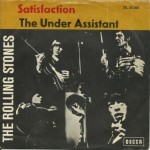 Such thoughts were probably far from the minds of Jagger and Richards as they struggled to write the song. Indeed, “Satisfaction” came awfully close to never existing at all. Richards came up with the song’s initial concept in his sleep, woke briefly to hum the melody into a cassette recorder, and promptly fell asleep snoring with the tape still running. He adapted the grammatically dubious “I can’t get no satisfaction” line from a Chuck Berry song, “Thirty Days.” Neither he nor Jagger, who worked on most of the lyrics, were hugely enthusiastic about its prospects, envisaging it as a folk-driven album track.
Such thoughts were probably far from the minds of Jagger and Richards as they struggled to write the song. Indeed, “Satisfaction” came awfully close to never existing at all. Richards came up with the song’s initial concept in his sleep, woke briefly to hum the melody into a cassette recorder, and promptly fell asleep snoring with the tape still running. He adapted the grammatically dubious “I can’t get no satisfaction” line from a Chuck Berry song, “Thirty Days.” Neither he nor Jagger, who worked on most of the lyrics, were hugely enthusiastic about its prospects, envisaging it as a folk-driven album track.
The Rolling Stones started recording “Satisfaction” at Chess Studios in Chicago on May 10. This studio, on the city’s gritty south side, was sacred to the fresh-faced English boys, the home of their heroes such as Chuck Berry, Howlin’ Wolf and Muddy Waters.
They didn’t have much to show for their efforts – just an acoustic version with Brian Jones on harmonica – and resumed work on the song two days later at RCA Studios in Hollywood. Paradoxically, it was an outsider who played an outsized role in the song’s development.
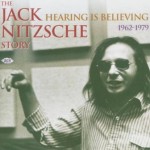 Jack Nitzsche
Jack Nitzsche, a composer and arranger at RCA, had worked on records by artists such as Frankie Laine and child star Eddie Hodges where “Wrecking Crew” session guitarist Billy Strange plugged his guitar into an obscure effects pedal called a Fuzz-Tone. The sound was designed to approximate a brass instrument such as a trumpet or tuba.
Nitzsche introduced the Fuzz-Tone to Richards, who later claimed he had envisaged a horn section on the song, and history was made. The Fuzz-Tones reportedly flew off shelves in the months after “Satisfaction” was released.
Coincidentally, Otis Redding released a horn-driven version of “Satisfaction” hot on the heels of the Stones’ recording. To this day, the Stones’ live version of “Satisfaction” usually features a horn section.
Nitzsche, by the way, provided other indispensable ingredients – that’s him banging on the prominently mixed tambourine, and barely audibly on the piano.
“[His] piano is so brilliant that on most equipment you cannot even hear it, but if it was not there …” said Andrew Loog Oldham, the band’s manager and producer, adding that the Stones followed the piano’s lead.
Oldham recalled the recording process was a “simple” affair. After the Stones were done. Oldham, assisted by engineer Dave Hassinger, transformed the throwaway tune into the anthem we know and love.
###
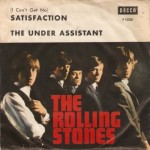 Fast-forward 36 years later, to 2001, and Jagger is strolling in Miami when a 9-year-old girl politely walks up to him. If there’s one thing she knows about the Rolling Stones, it’s “Satisfaction.” Or rather, Britney Spears’ recent cover of the song, with some lyrical updates. They both agree it’s quite good. His inquisitor would now be about 23, old enough to appreciate the real thing in an American football stadium. Satisfaction guaranteed.
Fast-forward 36 years later, to 2001, and Jagger is strolling in Miami when a 9-year-old girl politely walks up to him. If there’s one thing she knows about the Rolling Stones, it’s “Satisfaction.” Or rather, Britney Spears’ recent cover of the song, with some lyrical updates. They both agree it’s quite good. His inquisitor would now be about 23, old enough to appreciate the real thing in an American football stadium. Satisfaction guaranteed.
Copyright © 2015 by Dean Goodman. PLEASE DO NOT CUT AND PASTE THE WHOLE THING
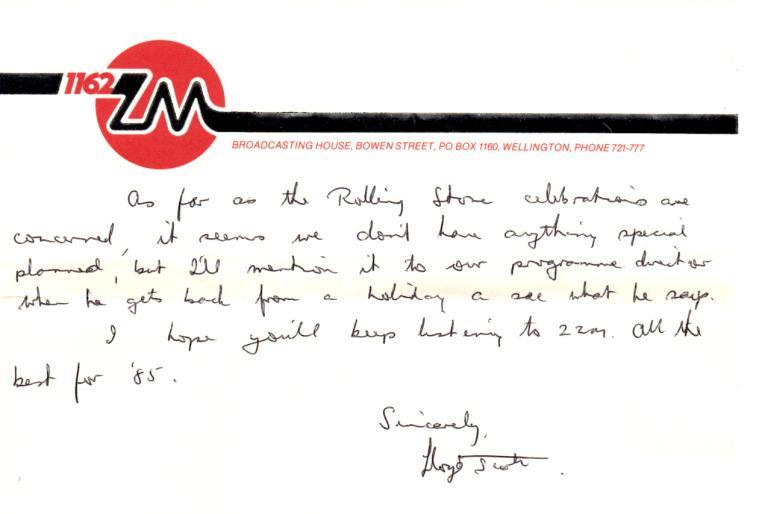
###
NOTE: My gossipy rock bio Strange Days: The Adventures of a Grumpy Rock ‘n’ Roll Journalist in Los Angeles is available here. For more info, go to strangedaysbook.com
